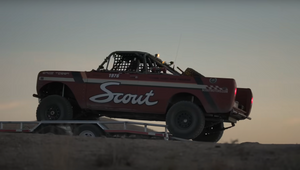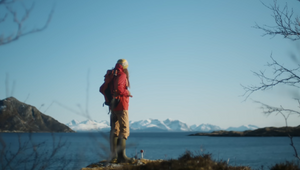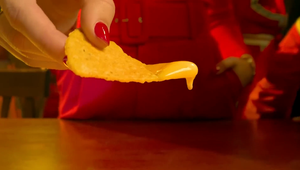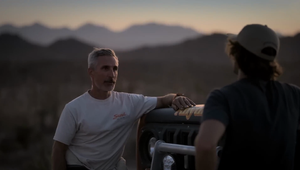
The VFX Factor: Making More Time for Bling with Jen Howard
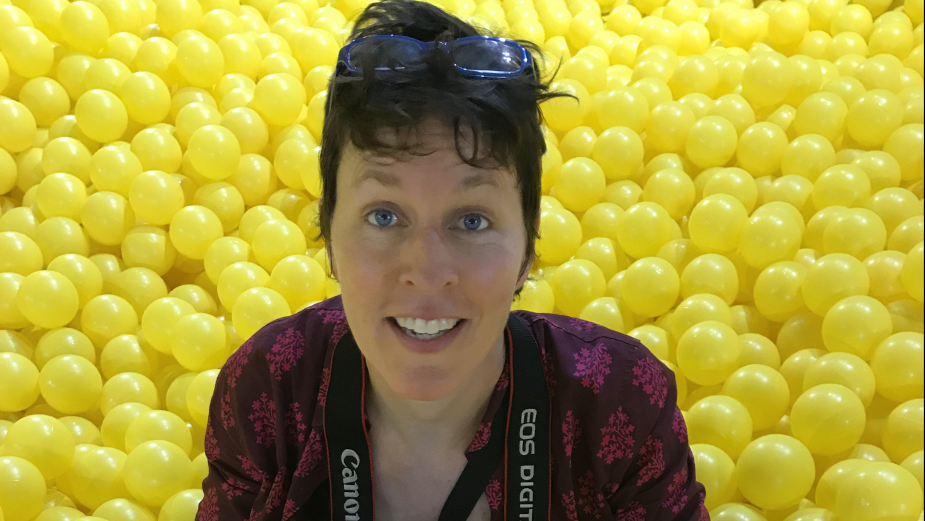
Jen Howard is a compositor at creative studio Carbon. With over 30 years in the filmmaking industry, her captivating story starts with a running gig for the godfather of model making Greg Jein (any 'Close Encounters' fans out there?), saw the introduction of digital and computers (hello new friend 'the undo button'), and includes twenty years with the magic makers at ILM.
As a compositor at Carbon, Jen can be found crafting the visuals for prominent, award-winning commercials and short films. Recent projects include Porsche's high octane Super Bowl spot 'The Heist' (shortlisted for Best VFX at the Clios), Google’s first ever 3D Billboard in Times Square, starring a fully CG Ludacris, and short film 'Repeater,' winner of two Clios, a Gold One Show Pencil and a Gold LIA Statue.
Read on below for insights and learnings from a life full of creativity and collaboration.
LBB> What’s the biggest misconception people have about VFX?
Jen> It can be easy to underestimate the amount of artistry and creativity involved in visual effects. The job is more than implementing the maths that puts a dinosaur realistically into a scene. Because unlike maths, there is never one right answer as to what a shot should look like. Everything is up for grabs; the question really is: “What should this shot feel like?” There’s a story being told and colour, contrast, composition, and depth of field are your language. The same dinosaur shot can be mysterious or surprising, or ominous or majestic - all depending on how you dial it.
LBB> There are two ends to the VFX spectrum - the invisible post and the big, glossy 'VFX heavy' shots. What are the challenges that come with each of those?
Jen> I love the big glossy VFX shots because there’s a bar to hit, and then exceed. The audience gets pretty quickly that they’re in for a visual treat, and you need to top or put a twist on whatever their imagination comes up with. So you give them the experience of anticipation, and then the delight of seeing something that’s what they wanted, only more so. It’s a conversation directly with the audience in which you’re drawing attention to your work, so you have to deliver, and make it amazing both conceptually and technically.
The invisible post though goes by (if done well) completely under the audience’s radar. The effects are in service of a story and only come to the attention of the audience indirectly as they help manifest it and deepen their experience of that story. The last thing you want in this case is to be noticed at all. The craft here is to create a seamless illusion in support of an unselfconscious experience.
Both of these types of projects are extremely satisfying for me. I enjoy the showing off, and also the sneaky sleight of hand. Either way you’re building something for the audience, sending them on a little journey, and that’s the piece I love.
LBB> As a VFX person, what should directors be aware of to make sure you do the best possible job for them?
Jen> The VFX team is a director’s thought partner. We manifest the ideas in their head, and work with them to evolve, push, and iterate on those ideas. Our team brings their full creative selves to the table and our biggest thrill is to exceed their expectations of what is possible.
The demands of each project are different, and the VFX supe can see per project which are the most crucial pieces to put in place. When a director and VFX supe collaborate early on in a project, it helps ensure the best results for each shot. We love solving puzzles with the director, whether that be from a creative, technical, budget or any kind of view point. Planning together early on is also a great time saver, allowing more work at the end to add extra polish and finessing to certain shots.
LBB> VFX is a true craft in the classic sense of the word. Where did you learn your craft?
Jen> I learned my craft in a very roundabout way. An early love of Japanese anime propelled me to CalArts to study animation where I discovered I had no talent as an animator - and even worse - hated doing it. But moving to California did open a world of possibilities, and I got a job with the model builder Greg Jein as his runner. He was a godfather of movie model making (think ‘Close Encounters’), and a sweet and funny guy. He taught me how to build stuff and I freelanced around LA doing that. About eight years later - boom - computers. Nobody knew how much they would be able to do; what would go digital and what would remain practical? Dream Quest Images, which had a big model shop and motion control stages, opened a digital division. A bunch of us builders spent time over there trying the software and reading the manuals. And eventually they let me work on the digital side too because they just needed hands. We were all learning on the job as the industry itself developed, and that’s pretty much how it went from there on out.
My first digital job was rig removal for ‘The Rock’. On that one I had the pleasure of building miniature diving gear for diver puppets mounted on a motion control system and shot dry for wet on stage, and then painting out their wires after they were shot. (Then I went back into the model shop and mourned the lack of an undo bottom, which I had gotten used to.)
The biggest lesson I learned from this beginning was: do your best at a task even if it isn’t the thing you want to do the most. Displaying rigor at a menial task will open doors to more rewarding ones. And the importance of kindness as a work value and the joy of teamwork.
LBB> Think about the very, very start of a project. What is your process for that? Do you have a similar starting point for all projects?
Jen> The start of a project is exploration. While there are usually elements to start with, often the look of a shot is up in the air enough that you don’t totally know where you’re going. Or possibly, you have a good idea of the where, but not the how.
In my comp script, I’ll try doing the same thing many different ways. I like to keep things neat and label them pretty early on so I can see at a glance what each pile of nodes is doing, and think about those methods and what is and isn’t working. And see if that inspires other approaches.
LBB> We imagine that one of the trickiest things with VFX is, time issues aside, deciding when a project is finished! How do you navigate that?
Jen> A project is finished when it can tell the story to the audience that the director has in their head. Ideally it is also technically perfect. But there’s a lot to be said for the ‘nobody is looking there’ philosophy; if you have a lot of shots to do, you need to focus on the crucial stuff. At ILM they had a category ‘CBB’ Could Be (even) Better, for when a shot was finished and yet one could see things they’d like to plus out if there was time. And just to circle back to a previous question, this is where good planning pays off - there’s time for more bling.
LBB> Is there a piece of technology or software that's particularly exciting you in VFX? Why?
Jen> This is not new news but I’m still over the moon about having virtual cameras in Nuke. When you start out having to track every single thing into a shot in 2D screen space I guess you never really get over how cool having 3D space is.
LBB> VFX is a craft that relies on you really looking at nature - how light works, how gravity works, the mannerisms of a kind of creature, how crowds work, skeletons, explosions… whether its animation or compositing or anything else… So how do you like to approach the research side of your job? What’s the most random or intriguing thing you’ve learned from working on a project?
Jen> The thing that’s really funny is that sometimes reality doesn’t look real. I’ll see smoke plumes with what look for all the word like matte lines around them. Or a sky that just does not belong behind those mountains. Sometimes a client will ask us to fix something that’s actually in the original photography. That said, nature does have rules and you need to be able to tell when you’re breaking them. (And of course, you can choose to break them for effect.)
It helps to do some manual photography and get a sense of how seeing works, as the camera is a lot like the eye and it will show you the things your eyes are doing that you don’t notice. For instance, with a photo you can look at something that is out of focus. You can’t do that with your eyes because then it is in focus as soon as you try. Same with exposure - everything is exposed properly when you look at it.
Any detail oriented craft can probably help a person to see the world more completely. Which is partly, I think, just learning the patience to sit with something beyond the first glance. Look at it. No really, look at it. No REALLY.
Online research is of course a convenient source of reference for something out of my experience. Or even other movies to see how they’ve handled a visual situation, whether realistic, or something fantastical, or breaking the rules.

LBB> When you’re watching a VFX-heavy ad or movie, what are the tells that you look for to figure out how well crafted it is?
Jen> A well crafted FX sequence has an immediate sense of scale. Whether inside a driving car or on a battlefield, you know where you are and you can feel the space right away. Because all the elements in the scene are unified and it is composed to direct your eye, your mind jumps immediately to the story at hand. Maybe someone in the car is looking for a way to escape and you think “Look how terrified they are, but the car is going so fast how can they get out?” Not “Yikes look at that fake background going by in the windows, that actor looks really silly pretending to be frightened on some car set.”
LBB> What was your first creative milestone in the industry – the project you worked on that you were super proud of?
Jen> I’m proud of ‘Rango’, a stylised, weird, and delightful all CG feature that we did at ILM in 2010 (directed by Gore Verbinski). It was ILM’s first and so far only all CG film. We brought something special to that format with our focus on realism and cinematic flair. The CG was rendered in layers and combined in comp as a way to permit a round of compositing love for each shot. Exposure balancing, practical elements like flares and dust, compositional enhancement with contrast and colour., they all made for a really unique end product.

Check out more of Jen's work in the trailers for Rango and Kong: Skull Island.










